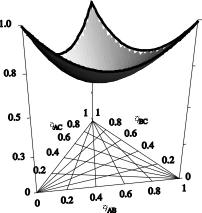Former projects
- Hard- and Software Platform
- Comparison with Human Control
- Treating Measurement Artifacts
- Non stationary EEG Analysis of Painful Experimental Stimulation
- Control of Hypnosis through Bi-Spectral Index Analysis and Endtidal Gas Concentration
- Controlling AnalgesiLevel through Stress Response Analysis
- Simulating a Patient undergoing Anaesthesia: An Approach through Hardware-in-the-loop Simulation

Our research is not just concerned with demonstrating feasibility of automatic control application to anesthesia. We also aim at the clinical validation in large number of operations. The goal is to develop a prototype system that can be handled by an anesthetist without engineering support. To do so a solid experimental hard and software platform is required. Topics addressed in the field are object oriented software design, man machine interaction and safety considerations. The current feedback system is integrated on standard anesthesia workstation type Cicero EM. And the software is implemented on target-host computer system using the real time operating system XOberon of ETH.
Routine manipulations of an anesthetist can temporarily distort the measurements signal. Examples are the taking of blood samples or the auto calibration of a gas monitor. Such artifacts may seriously degrade controller performance. Our research thus is also concerned with finding elegant ways of treating these artifacts with guaranteed stability of the closed loop control system.


The site of action of many anaesthetic drugs is deemed to be the brain. Therefore it seems to be reasonable to consider the Electro Encephalogram (EEG) as the principle signal to assess the depth of anaesthesia.
However, current analysis techniques are not sufficiently developed yet to provide a reliable indicator for the depth of anaesthesia. Up to now, Fourier analysis and Bi-spectral analysis were used. These techniques hinge upon the assumption of pseudo stationarity of the signal. However, most of the useful information is contained in the non stationarity characteristics of the EEG. Time-frequency representations (TFRs) are special signal analysis techniques which were developed to cope with such non stationarities. The aim of the project is to test different TFRs to analyze EEG data collected during general anaesthesia with a combination of drugs.
The TFRs must be tested on short, standardized, experimental noxious stimulation, to assess reaction of the CNS system and consequently signs of awareness.
Open research issues at the moment are :
- Optimization of TFRs should be performed to yield the maximum information possible of the state of the patient
- Different kernels of TFRs should be tested and evaluated in terms of accuracy, theoretical properties and computation efficiency
- TFRs should be tested on different noxious stimulations, to establish which is the most informative stimulation



Bi-spectral index is becoming the standard clinical monitor to assess depth of anaesthesia during surgery. During previous research efforts we developed a predictive model for the Bi-spectral index when the inhaled drug is the hypnotic Isoflurane. The model is made of two parts, one describing the distribution of the drug and the second describing the effect of the drug on the Central Nervous System (CNS) activity. The first closed loop controllers for the depth of hypnosis are been tested on pilot studies since April, 12.
To compensate for inter individual variability and large model uncertainty coming from the complexity of the model under examination, robust control techniques have been examined. A second possibility is to use the online measured physiological signals to adapt the distribution model to the patient's characteristics. Such techniques are now investigated to perform more stable and accurate anaesthesia.
Controlling Analgesia Level through Stress Response Analysis
An important key issue during surgery is to assess the analgesic level of the patient. That is, make sure that the patient does not perceive neither recalls pain. According to the medical community, pain is "an unpleasant conscious sensation". It becomes then relevant to decide whether there could be pain if the patient is unconscious. In the awakened patient, painful episodes produce stress responses, i.e. blood pressure and heart rate increase. These phenomena are also present in the unconscious patient. Therefore one might assume that obtunding the stress response leads to appropriate analgesia. Noxious Stimulations have been performed on volunteers under balanced anaesthesia with Isoflurane and Alfentanil as hypnotic and analgesic respectively. The stress response with respect to such standardized stimulation might be fruitful to predict reactions to surgical stimulation.
The goals of this research project are :
- to find useful characterizations to quantify the stress response during anaesthesia
- to correlate stress response characterization with drug levels in the body
- to test synergistic, antagonistic interactions between drugs
- to develop control system to control analgesia during surgery



The control algorithm has to be tested in a closed-loop manner before entering the operating theatre. Physical models show restricted flexibility and functionality concerning the MIMO characteristcs of the patient. However, the mathematical models used for controller design can serve as an approbiate bases for simulating the patients behaviour. The mathematical models describe the pharmacokinetics and pharmacodynamics of the administred anaesthetic drugs as well as the effects of artificial ventillation. A target-host real-time platform was added to the existing control platform in a back-to-back fashion. The simulation platform replaces the sensors, actuators and the patient. This hardware-in-the-loop simulation set-up is based on the same principles as the controller platform and the software architecture is identical. The real-time aspects of the operating system provide the bases for proper simulation of the patients behaviour.
The main advantage of this set-up is that non modeled process characteristics can be introduced from outside the control loop, such as
- change of noise level
- measurment failure and artefacts
- surgical stimulation
- ...
This hardware-in-the-loop simulation environment is also used for training the involved research anaesthetist on the controller platform before entering the operating theatre.
